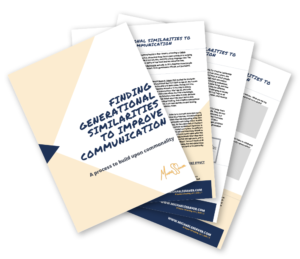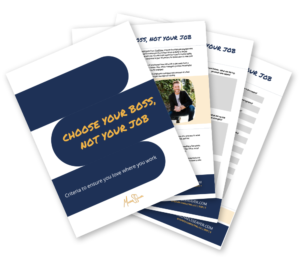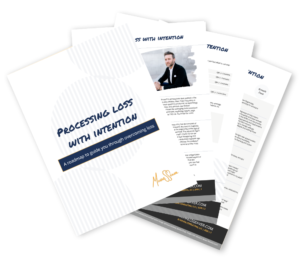One of the most important jobs I do for growing companies is help them design structures and systems for supporting employee growth and productive innovation.
In other words, I support leaders in creating more human workplaces.
An organization I consult, for example, has been rapidly acquiring smaller businesses. During the buying spree, however, leaders had not invested time defining and implementing a consistent culture. So, across offices, individuals behave in accordance with the culture of their organization prior to it being acquired. My role is to challenge today’s leaders to find ways to design a cohesive organization-wide culture so that all employees have goals that are aligned with new cultural norms and annual goals.
Each executive is now looking at her work through fresh eyes and having conversations she’d not had before. Thankfully, most are rising to the challenge and role modeling how we’d like all employees to show up. The changes we are implementing are working well, but it’s also creating a fair amount of upheaval. I’m everyone’s personal Wendy Rhoades at the moment. Employees are calling me because there are myriad emotional issues coming to the surface during this period of immense change they’ve not encountered before.
This is not just a situation being faced by one organization. Across the world, people are going to work, feeling a lot of feelings, and being asked (explicitly or implicitly) not to express them.
Emotions Are Information. Use Them, Don’t Ignore Them.
Last week, I read an article put out by MIT Sloan about how emotions in the workplace are not a bad thing…not even close. They’re actually information—data—that can be used to advance an organization in major ways if leaders tune in and adapt.
In other words, there’s something here. Something big.
Emotions are literally contagious. When an organization doesn’t address the emotions of its employees, or is less human in the way it facilitates business, there may be troubling effects:
- Distrust and poor communication
- Inefficient time management
- Slower and more costly processes
- Higher levels of disengagement and employee turnover
- Poor customer service and public brand
- Lower revenue and profit margin
When employees are discouraged from being emotional, human, or authentic, they’ll likely become disengaged. The bullet points I just laid out happen at scale. In a nation with an unemployment rate of 3.5%, remaining competitive becomes nearly impossible.
Why So Emotional?
Entry level, repetitive skill jobs are being replaced by machine learning and AI and displaced workers are being forced to upskill. Employees are being asked to learn, unlearn and relearn at a pace humans have not encountered before. As a result, their brains’ limbic systems are regularly going into one of the fight, flight or freeze modes.
Add to the mix the fact that new products and services are continually coming to market and employees are being tasked with figuring out how to position, market, sell, and deliver them. As those kinks work themselves out, mistakes will be made, raising self-doubt and heightened emotions. Millennials born after 1980 and Gen Z, born after 2000, suffer from abnormally high levels of anxiety. They’ve come of age in the social media, terrorism on American soil and school shootings era and leaders must now negotiate methods to make them feel psychologically safe.
As the barriers between work and home dissolve and increasing transparency brings personal issues into the workplace, organizational structures should be built to support employees—or companies may lose their talent.
How can we make your organization more human?
- Lay out a vision, long-term goal, and step-by-step plan to achieve a more human workplace. Often, a board or executive team takes responsibility for drafting, approving and implementing mission and values statements and annual and long-term goals. A more future-ready methodology would be to hold one-to-one meetings or focus groups across the organization to collect input from persons on the front lines. Have an online idea forum or survey where all employees can participate in vision setting for the organization based on what they’re experiencing day-to-day. When every employee’s opinion is heard, they’ll be more committed to the plan and work harder to ensure goals are achieved.
- Adjust compensation, incentives, and bonus methodologies. The idea is to shift from a focus on solely accomplishing individual goals to rewarding employees for accomplishing individual and organizational goals concurrently. Those born after 1980 view success in the workplace as a collaborative effort. They’re at ease in teams, are achievement oriented, and prefer to accomplish large goals with others. So, ahead-of-their-time organizations that design in-the-moment incentives that are aligned with what they are trying to accomplish long term are greatly increasing their odds of success.
- Develop mentorship and coaching frameworks. Leaders need tools, processes, and resources for helping employees manage communication conflict, rapid professional growth and other emotional workplace challenges. Organizations will have to mitigate the risks associated with employee emotions. So, design structures for training more people inside your organization on how to help with others’ emotional circumstances. The goal is to make employees feel more psychological safe moment to moment to recover lost productivity. The era of outsourcing all mental health solutions seems to be over.
- Provide customized learning opportunities. There are four different learning styles: reading and writing, auditory, kinesthetic, and visual. Ideally, an organization would offer a variety of delivery methods for each specific learning objective—a book, a podcast, a video, a one-to-one coaching session, an offsite event, etc. The idea is to mass customize and create an ala carte menu of ways a learning objective or skill can be absorbed by the employee. That’s more challenging for the organization than simply offering a training and making attendance mandatory, but offering diversity is more effective. And, of course, more human.
- Develop innovation feedback mechanisms. Innovation to the Core by Rowan Gibson and Peter Skarzynski reminds us that innovation is simply a series of repeatable processes. When process-oriented employees see this, change becomes less scary. There’s a blueprint to innovation. Invite every employee to participate through their annual goals, competitions, virtual suggestion boxes, innovation committees, compensation structures, and more. The likely outcome of doing so is a more engaged workplace, a new culture, and increased top-line revenue.
- Bake recognition, appreciation, praise into all events and facets of interaction. The way we combat the massive quantities of debt, pressure, and anxiety that Millennials experience is by deliberately offering more work-life integration, feedback, tailored coaching and recognition for their effort. We need to ensure that younger employees feel seen and appreciated, weekly (if not more frequently), for their growth and workplace contribution. We’ve moved away from this as a society, so the organizations that do this will win…fast.
Dear Boomer
If reading these steps has you thinking that humanizing the workplace will be too hard, and that younger workers should simply “suck it up” and “leave their emotions” at home, I offer the following advice: don’t be on the wrong side of history. The above changes are happening, whether or not we like them, and expressing emotions at work isn’t going to miraculously stop.
Also, I would argue that even the most old-school professional on the planet does have a softer, more emotional side.
To younger readers, I want to offer that in the time Boomers were being raised, their parents were just coming out of World War II, after just coming out of the Great Depression. They were raised during a time in which the refrain was, “Just work, just work, just work.” Of course, Boomers did push back in the 1960s. Think of Woodstock. These individuals are, in their heart of hearts, emotional beings. But some of this cohort have suppressed that part of who they are. Ask them questions about core values, their life’s mission, and lessons they’ve learned. Both parties will begin seeing uncommon commonalities and a more emotional and human way to do business.
Looking to the Future
Can you believe this is the last e-newsletter of 2019? As Barbara Walters would say, “This is 2020!” For the vast majority of us, it will be a year of focused effort, accountability, and of getting more sustainable results at work. We’re being given the okay to stop playing by old rules, so we must begin new ways of life that serve and benefit all of humanity.
It is okay to consult untraditional experts to find new, more effective and unconventional solutions that benefit future generations. It’s time.






Connect with me